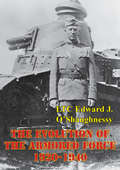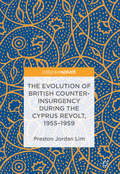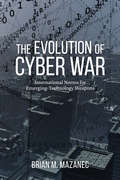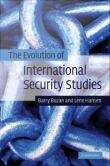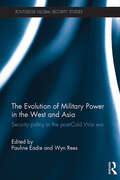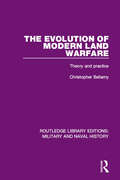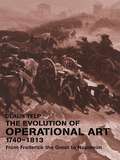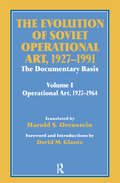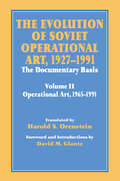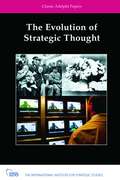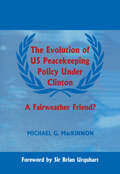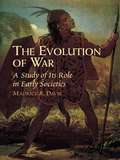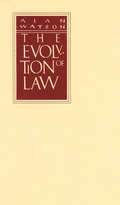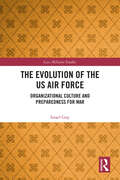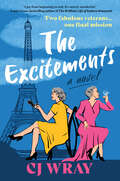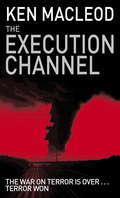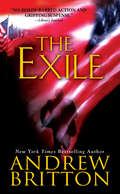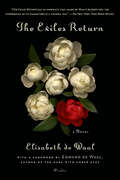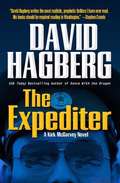- Table View
- List View
The Evolution Of The Armored Force, 1920-1940
by Ltc Edward J. O’shaughnessy Jr.In armored force circles the inter-war years are sometimes referred to as the "lean years." The abolishment of the separate Tank Corps in 1920, the Depression Era budget constraints and a lack of national strategic vision have caused a mistaken belief that little attention was paid to the development of armored force structure and doctrine in this critical time period. In fact the evidence points to the contrary. Rather than development by a kick start in 1940, the evidence illustrates an evolution of armored doctrine and force structure. The process started immediately upon return from World War I by a core of tank visionaries and advocates. The fruits of their labors were realized in 1940 when war demanded the rapid fielding of armored divisions. The fact that fourteen divisions were fielded in four years, when none had existed previously, is testimony to their efforts. This paper is told from their perspective. In the face of significant institutional obstacles these tank advocates responded to a higher calling. The inter-war period has parallels for us today. Once again we have declared victory, are downsizing our force structure and slashing our defense budget. Will we retain and encourage within our ranks visionaries and advocates to prepare our military for future conflict as we enter a new "lean years" era?
The Evolution of British Counter-Insurgency during the Cyprus Revolt, 1955–1959
by Preston Jordan LimThis book evaluates the prosecution of British counter-insurgency operations during the Cyprus Revolt of 1955-1959. Historians have typically cast the Cyprus Revolt as a failure, situating it within the larger pattern of the post-1945 failure of conventional armies to deal with insurgencies. By analyzing the reminiscences of British policemen, National Servicemen, and officers both junior and senior, the study provides a ground-up assessment of the British counter-insurgency effort. The work examines also the contradictions gripping Greek and Turkish Cypriot opinion, arguing that developments during this time period set the scene for intercommunal violence in the 1960s and 1970s. Military history is taken in a broad sense and includes the Cypriot government’s attempts to control its image in the eyes of international opinion. By intimately dealing with indigenous news outlets like the Times of Cyprus and Halkın Sesi, this book offers lessons for modern policymakers and civil servants concerned with the importance of sound press strategy.
The Evolution of Cyber War: International Norms for Emerging-Technology Weapons
by Brian M. MazanecFormer secretary of defense Leon Panetta once described cyber warfare as “the most serious threat in the twenty-first century,” capable of destroying our entire infrastructure and crippling the nation. <p><p> Already, major cyber attacks have affected countries around the world: Estonia in 2007, Georgia in 2008, Iran in 2010, and most recently the United States. As with other methods of war, cyber technology can be used not only against military forces and facilities but also against civilian targets. Information technology has enabled a new method of warfare that is proving extremely difficult to combat, let alone defeat. <p> And yet cyber warfare is still in its infancy, with innumerable possibilities and contingencies for how such conflicts may play out in the coming decades. Brian M. Mazanec examines the worldwide development of constraining norms for cyber war and predicts how those norms will unfold in the future. Employing case studies of other emerging-technology weapons—chemical and biological, strategic bombing, and nuclear weaponry—Mazanec expands previous understandings of norm-evolution theory, offering recommendations for U.S. policymakers and citizens alike as they grapple with the reality of cyber terrorism in our own backyard.
The Evolution of International Security Studies
by Barry Buzan Lene HansenInternational Security Studies (ISS) has changed and diversified in many ways since 1945. This book provides the first intellectual history of the development of the subject in that period. It explains how ISS evolved from an initial concern with the strategic consequences of superpower rivalry and nuclear weapons, to its current diversity in which environmental, economic, human and other securities sit alongside military security, and in which approaches ranging from traditional Realist analysis to Feminism and Post-colonialism are in play. It sets out the driving forces that shaped debates in ISS, shows what makes ISS a single conversation across its diversity, and gives an authoritative account of debates on all the main topics within ISS. This is an unparalleled survey of the literature and institutions of ISS which will be an invaluable guide for all students and scholars of ISS, whether traditionalist, 'new agenda' or critical.
The Evolution of International Security Studies
by Barry Buzan Lene HansenProspect Theory: For Risk and Ambiguity provides the first comprehensive and accessible textbook treatment of the way decisions are made both when we have the statistical probabilities associated with uncertain future events (risk) and when we lack them (ambiguity). The book presents models, primarily prospect theory, that are both tractable and psychologically realistic. A method of presentation is chosen that makes the empirical meaning of each theoretical model completely transparent. Prospect theory has many applications in a wide variety of disciplines. The material in the book has been carefully organized to allow readers to select pathways through the book relevant to their own interests. With numerous exercises and worked examples, the book is ideally suited to the needs of students taking courses in decision theory in economics, mathematics, finance, psychology, management science, health, computer science, Bayesian statistics, and engineering.
The Evolution of Military Power in the West and Asia: Security Policy in the Post-Cold War Era (Routledge Global Security Studies)
by Pauline Eadie and Wyn ReesThis book investigates how states in both the West and Asia have responded to multi-dimensional security challenges since the end of the Cold War, focusing on military transformation. Looking at a cross-section of different countries, this volume assesses how their armed forces have responded to a changing international security context. The book investigates two main themes. First, how the process of military ‘transformation’- in terms of technological advances and new ways of conducting warfare - has impacted on the militaries of various countries. These technologies are hugely expensive and the extent to which different states can afford them, and the ability of these states to utilise these technologies, differs greatly. Second, the volume investigates the social dimensions of military transformation. It reveals the expanding breadth of tasks that contemporary armed forces have been required to address. This includes the need for military forces to work with other actors, such as non-governmental agencies and humanitarian organisations, and the ability of armed forces to fight asymmetric opponents and conduct post-conflict reconstruction tasks. The conflicts in Iraq and Afghanistan exemplified how important the relationship between technological and social transformation has become. This book will be of much interest to students of strategic studies, military innovation, Asian politics, security studies and International Relations.
The Evolution of Modern Land Warfare: Theory and Practice (Routledge Library Editions: Military and Naval History)
by Christopher BellamyExtensively illustrated with 52 detailed campaign and battle maps and diagrams, this book, originally published in 1990, surveys the evolution of warfare in Europe from Napoleon to the end of the twentieth century and in Asia from the Middle Ages. It considers the interaction of technology and warfare. With wide-ranging examples, the book includes two in depth case studies, one on the Soviet Operational Manoeuvre Group and its predecessors in the Russian Imperial Army, the other on the history of land warfare, including guerilla warfare, in Asia. In this book the author demonstrates that military history can be of immense practical help to the modern military analyst and professional. Now updated with a new introduction to take into account changes since 1990, this book remains of essential value to students, teachers & professionals in political & social history, international relations, defence, war & peace studies.
The Evolution of Operational Art, 1740-1813: From Frederick the Great to Napoleon (Military History and Policy)
by Claus TelpOperational art emerged from the campaigns of Frederick the Great to the end of the Napoleonic Wars. It was the result of three dynamic interrelationships: between military and non-military factors such as social, economic and political developments; between military theory and practice; and between developments in military theory and practice in France and Prussia.In the period 1740-1815 a major change in the complexity of warfare took place. This was reflected by an increase in the complexity of the analysis of warfare via the introduction of the operational level between the strategic and tactical levels.The evolution of operational art, driven by these three dialectical processes, evolved in stages. In the first stage, Revolutionary France had experimented with operational art though with limited success. Then, Napoleon had used it with remarkable success against an adversary clinging to outdated modes of warfare and organisation. In the final stage, Napoleon's operational art was successfully challenged by the Prussian brand.
The Evolution of Soviet Operational Art, 1927-1991: The Documentary Basis: Volume 1 (Operational Art 1927-1964) (Soviet (Russian) Study of War #No. 6-7)
by Harold S. Orenstein David M. GlantzThis collection of texts has been taken from formerly classified material in the official Red Army General Staff journal 'Military Thought'. The results are two volumes of great scope based on archival evidence. They stand as a compulsory reference point for anyone with an interest in the operational endeavours of the Soviet Army from the 1920's onward.
The Evolution of Soviet Operational Art, 1927-1991: The Documentary Basis: Volume 2 (1965-1991) (Soviet (Russian) Study of War #No. 6-7)
by Harold S. Orenstein David M. GlantzThe Soviet military concept of operational art and the associated theories such as "war of annihilations", "deep battle", and "deep operations" have been observed by the West since World War II. The Soviet government hid their military-theoretical work behind a veil of secrecy. Here, the Soviet theories are revealed in the words of those who created them in peacetime and applied them in war.
The Evolution of Strategic Thought: Classic Adelphi Papers
by Classic Adelphi PapersThe Adelphi Papers monograph series is the International Institute for Strategic Studies' principal contribution to policy-relevant, original academic research. Collected on the occasion of the Institute's 50th anniversary, the twelve Adelphi Papers in this volume represent some of the finest examples of writing on strategic issues. They offer
The Evolution of Strategy
by Beatrice HeuserIs there a 'Western way of war' which pursues battles of annihilation and single-minded military victory? Is warfare on a path to ever greater destructive force? This magisterial new account answers these questions by tracing the history of Western thinking about strategy - the employment of military force as a political instrument - from antiquity to the present day. Assessing sources from Vegetius to contemporary America, and with a particular focus on strategy since the Napoleonic Wars, Beatrice Heuser explores the evolution of strategic thought, the social institutions, norms and patterns of behaviour within which it operates, the policies that guide it and the cultures that influence it. Ranging across technology and warfare, total warfare and small wars as well as land, sea, air and nuclear warfare, she demonstrates that warfare and strategic thinking have fluctuated wildly in their aims, intensity, limitations and excesses over the past two millennia.
The Evolution of U.S. Military Policy from the Constitution to the Present, Volume I: The Old Regime: The Army, Militia, and Volunteers from Colonial Times to the Spanish-American War (G - Reference,information And Interdisciplinary Subjects Ser.)
by Michael Shurkin Gian Gentile Jameson Karns Adam GivensTracing the evolution of the U.S. Army throughout American history, the authors of this four-volume series show that there is no such thing as a “traditional” U.S. military policy. Rather, the laws that authorize, empower, and govern the U.S. armed forces emerged from long-standing debates and a series of legislative compromises between 1903 and 1940. Volume I traces U.S. military policy from the colonial era through the Spanish-American War.
The Evolution of U.S. Military Policy from the Constitution to the Present, Volume II: The Formative Years for U.S. Military Policy, 1898-1940 (G - Reference,information And Interdisciplinary Subjects Ser.)
by Gian Gentile Sean M. Zeigler Alexandra Evans Badreddine AhtchiTracing the evolution of the U.S. Army throughout American history, the authors of this four-volume series show that there is no such thing as a “traditional” U.S. military policy. Rather, the laws that authorize, empower, and govern the U.S. armed forces emerged from long-standing debates and a series of legislative compromises between 1903 and 1940. Volume II focuses on the laws enacted in the early 20th century that transformed the Army.
The Evolution of U.S. Military Policy from the Constitution to the Present, Volume IV: The Total Force Policy Era, 1970–2015 (G - Reference,information And Interdisciplinary Subjects Ser.)
by Miranda Priebe Gian Gentile Jameson Karns Adam Givens Alexandra Evans M Wade MarkelTracing the evolution of the U.S. Army throughout American history, the authors of this four-volume series show that there is no such thing as a “traditional” U.S. military policy. Rather, the laws that authorize, empower, and govern the U.S. armed forces emerged from long-standing debates and a series of legislative compromises between 1903 and 1940. Volume IV traces how Total Force Policy has been implemented since 1970.
The Evolution of US Peacekeeping Policy Under Clinton: A Fairweather Friend?
by Michael G. MacKinnonThis fascinating study examines the dynamic process through which the Clinton administration developed a policy towards UN peace support operations. The author addresses the fundamental question: what factors influenced the shift in US policy towards the United Nations and its peace support operations and which factors were clearly dominant?Based on primary sources and interviews with political personalities and officials, the author examines four main factors which shaped the development of policy: the Executive branch, the bureaucracies (the State Department and Department of Defense), Congress and public opinion. These provide the basis for the core chapters of the book, which also contains a chapter on methodology and a chapter of summary analysis.
The Evolution of War: A Study of Its Role in Early Societies
by Maurice R. DavieThorough, highly informative and exhaustive study presents an exceptional collection of cases examining such topics as warfare as the business of one sex, religion as a cause of war, and war for the sake of glory. Cannibalism, human sacrifice, blood-revenge, and other factors in warfare among primitive peoples are also expertly examined.
The Evolution of Western Private Law
by Alan WatsonIn The Evolution of Western Private Law, renowned legal scholar Alan Watson presents a comprehensive overview of legal change in the Western world. Watson explains why and how such change occurs in mature systems, in underdeveloped systems, and when legal systems of different levels of sophistication and from different societal roots—such as those of the Romans and of Germanic tribes—come into contact.Originally intended as a second edition of the author's widely acclaimed The Evolution of Law (1985), this expanded edition has been completely restructured with more than double the number of examples. The result is a work that incorporates all the ideas that Watson has put forward during his twenty-five years studying comparative law and the development of legal systems, combining a remarkable range of sources with superb insight.
The Evolution of the US Air Force: Organizational Culture and Preparedness for War (Cass Military Studies)
by Israel GuyThis book looks at the history of the US Air Force through the lens of its (lack of) preparedness for major wars, which is shown to be a result of its organizational culture.The U.S. Air Force is probably the most powerful military force in history, both in its destructive firepower and in its ability to project it globally. Yet, despite its unparalleled power, the Air Force entered its first three pivotal conflicts – World War II, the Korean War, and the Vietnam War – unprepared. But surprisingly, it was remarkably well prepared for its fourth major war: the Gulf War of 1991. Could there be an underlying trait or characteristic, which influenced the Air Force between the wars, that historically caused the US Air Force to be unprepared for war or prepared for the wrong type of war? Surprisingly, there is such a factor which was quite prominent in the Air Force’s complex identity – its organizational culture. Besides providing a historical description of the Air Force, this book demonstrates clearly how its organizational culture evolved and how it caused the US Air Force to be prepared for the wrong war. It also shows that when the organizational culture changed, the Air Force changed its focus and arrived prepared for the following war: the 1991 Gulf War.This book will be of interest to students of air power, strategic studies, US public policy, and security studies in general.
The Excitements: A Novel
by CJ Wray"Irresistible...Filled with surprise, poignancy, and excitement, this is a surefire winner." --Publishers Weekly (starred review)A brilliant and witty drama about two brave female World War II veterans who survived the unthinkable without ever losing their killer instinct…or their joie de vivre.Meet the Williamson sisters, Britain’s most treasured World War II veterans. Now in their late nineties, Josephine and Penny are in huge demand, popping up at commemorative events and history festivals all over the country. Despite their age, they’re still in great form—perfectly put together, sprightly and sparky, and always in search of their next “excitement.”This time it’s a trip to Paris to receive the Légion d’honneur for their part in the liberation of France. And as always, they will be accompanied by their devoted great-nephew, Archie.Keen historian Archie has always been given to understand that his great aunts had relatively minor roles in the Women’s Royal Navy and the First Aid Nursing Yeomanry, but that’s only half the story. Both sisters are hiding far more than the usual “official secrets”. There’s a reason sweet Auntie Penny can dispatch a would-be mugger with an umbrella.This trip to Paris is not what it seems either. Scandal and crime have always quietly trailed the Williamson sisters, even in the decades after the war. Now armed with new information about an old adversary, these much decorated (but admittedly ancient) veterans variously intend to settle scores, avenge lost friends, and pull off one last, daring heist before the curtain finally comes down on their illustrious careers.
The Execution Channel: Novel
by Ken MacLeod'Distinctive, politically challenging, both tantalizing and satisfying.' - Kirkus Reviews'This man's going to be a major writer.' - Iain BanksFighting has spread across the Middle East and Central Asia to the borders of China. In the US, refugees from climate-change disaster subsist in FEMA camps. Images of official executions circulate on the Internet like al Qaeda videos. State agencies sponsor conspiracy theories as cover-ups. As the troops of the last superpower stand astride the last of the oil, China and Russia aren't the only states considering their options: certain nations of Old Europe are quietly preparing for the worst.James Travis is a middle-aged middle manager in a software company. He has a son in the army, a daughter in a peace-protest camp outside a USAF base, and a compromising relationship with a foreign intelligence service. When his cover is blown hours before a nuclear explosion destroys the base, Travis, his son, and his daughter are all in serious trouble. And as the spooks and disinformation specialists focus their efforts on his capture, Travis knows that all it will take is one mistake and his only memorial will be another grainy video on . . . The Execution Channel.Ken MacLeod's most relevant and accessible novel to date.Books by Ken MacLeod:Fall RevolutionThe Star FractionThe Stone CanalThe Cassini DivisionThe Sky RoadEngines of LightCosmonaut KeepDark LightEngine CityCorporation Wars TrilogyDissidenceInsurgenceEmergenceNovelsThe Human FrontNewton's WakeLearning the WorldThe Execution ChannelThe Restoration GameIntrusionDescent
The Exeter Blitz
by David ReesIt was the night of May 3-4, 1942, and the Lockwoods were scattered all over Exeter. Colin's mother was at the dress shop where she worked. Mary and her boyfriend Lars were at the cinema. June and Mr. Lockwood were at home. And Colin was in the tower of the city's historic cathedral. Wherever they were, they could hear the sirens start, and they knew what that meant... But this air raid was like no bombing before. Bombs fell like rain, bursting apart houses and shops and streets, followed by incendiary shells. Soon the city was engulfed by a fire storm, and the low-flying planes machine-gunned rescue workers and everyone else. Only the ancient medieval cathedral went relatively unscathed. As morning dawned, bringing the all-clear, the Lock woods emerged, each from the place where he had taken shelter, and looked about, checking to see who had survived. Their house was in ruins, their lives had been changed, but as each face reappeared, they knew that they had much to be thankful for. David Rees here re-creates the feelings and experiences of a family living through a war.
The Exile: The American; The Assassin; The Invisible; The Exile (A Ryan Kealey Thriller #4)
by Andrew BrittonFor the President of the United States, the daily horror of life in West Darfur's killing fields just hit heartbreakingly close to home. His niece, Lily, has been targeted and savagely murdered by a corps of fearsome government-backed militiamen. With the situation too explosive for diplomatic or military solutions, yet with the President and the public thirsting for revenge, America is out of options. Except one: Ryan Kealey, ex-Special Forces, former CIA, and unrivaled counterterrorism expert.Kealey has been central to the war on terror for over a decade. But after the Agency hung him out to dry--and let his lover die--he turned his back. Until now. For the government has revealed its trump card, the one thing Kealey will risk everything for. Soon, from the lawless streets of Sudan to the highest levels of the American government, Kealey unearths secrets and betrayals that shock even his war-tempered sensibilities--and ignite a conflagration with unknowable global consequences. "In this age of terrorism, [Britton's] plots seem to jump straight out of the headlines. . .he may well give Tom Clancy a run for the money." -St. Louis Post-Dispatch on The Invisible "The Assassin is the 'best' of Tom Clancy, Michael Connelly, and Robert Ludlum all rolled into a single book." --armchairinterviews.com "Brilliantly well-written with plotting sharper than a fence full of razor wire, a sizzling page-turner." --Brad Thor, New York Times bestselling author on The American
The Exiles Return: A Novel
by Elisabeth de WaalWITH A FOREWORD BY EDMUND DE WAAL, AUTHOR OF THE HARE WITH AMBER EYESSET IN THE ASHES OF POST–SECOND WORLD WAR VIENNA, A POWERFUL, SUBTLE NOVEL OF EXILES RETURNING HOME FIFTEEN YEARS AFTER FLEEING HITLER'S DEADLY REIGN Vienna is demolished by war, the city an alien landscape of ruined castles, a fractured ruling class, and people picking up the pieces. Elisabeth de Waal's mesmerizing The Exiles Return is a stunningly vivid postwar story of Austria's fallen aristocrats, unrepentant Nazis, and a culture degraded by violence.The novel follows a number of exiles, each returning under very different circumstances, who must come to terms with a city in painful recovery. There is Kuno Adler, a Jewish research scientist, who is tired of his unfulfilling existence in America; Theophil Kanakis, a wealthy Greek businessman, seeking to plunder some of the spoils of war; Marie-Theres, a brooding teenager, sent by her parents in hopes that the change of scene will shake her out of her funk; and Prince "Bimbo" Grein, a handsome young man with a title divested of all its social currency.With immaculate precision and sensitivity, de Waal, an exile herself, captures a city rebuilding and relearning its identity, and the people who have to do the same. Mesmerizing and tragic, de Waal has written a masterpiece of European literature, an artifact revealing a moment in our history, clear as a snapshot, but timeless as well.
The Expediter (Kirk McGarvey Series #13)
by David HagbergLate one balmy summer evening in Pyongyang, an important Chinese intelligence general on his way to a secret meeting with Kim Jon-Il is assassinated in plain sight of a surveillance camera. The two shooters are wearing the uniforms of North Korean police officers. Kim Jong-Il denies any knowledge of the shooting, but the Chinese do not believe him. As they prepare to attack, Jong-Il promises to unleash his nuclear weapons on downtown Beijing, Seoul, and Tokyo, plunging the entire region into nuclear war. Kirk McGarvey, just off a difficult assignment that took him to Mexico City, has returned to his visiting professorship at the University of South Florida. A colonel in North Korea's intelligence service shows up in person, asking McGarvey to prove that North Korea did not authorize the hit. It's the most extraordinary request McGarvey has ever received. He enters a dangerous international shadow world where almost nothing is as it seems. The puzzles lead him to a mysterious Russian ex-KGB multimillionaire whose specialty is expediting assassins for hire, to Pyongyang where he finds the wedge to open up a far-reaching plot so monstrous the entire world could go up into flames, and finally back to the one nation that potentially has the most to gain by such a war. And the most to lose . . .
